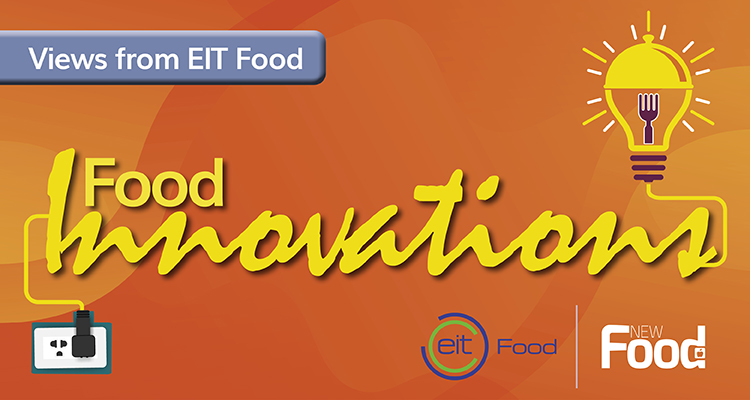Circular food economy: A solution to the climate crisis
- Like
- Digg
- Del
- Tumblr
- VKontakte
- Buffer
- Love This
- Odnoklassniki
- Meneame
- Blogger
- Amazon
- Yahoo Mail
- Gmail
- AOL
- Newsvine
- HackerNews
- Evernote
- MySpace
- Mail.ru
- Viadeo
- Line
- Comments
- Yummly
- SMS
- Viber
- Telegram
- Subscribe
- Skype
- Facebook Messenger
- Kakao
- LiveJournal
- Yammer
- Edgar
- Fintel
- Mix
- Instapaper
- Copy Link
Posted: 5 October 2022 | Dr. Andy Zynga | No comments yet
With fewer than 50 days to go until COP27, all eyes are on Egypt, with world leaders getting ready to gather to discuss and evaluate their progress on climate action and limiting global temperature increase to 1.5C.


Food was noticeably absent from the agenda at COP26 a year ago despite the opportunities identified through the 2021 UN Food Systems Summit, but this year might well be different. Egypt’s High-Level Climate Champion Mahmoud Mohieldin has declared that this year’s climate conference must prioritise food, alongside water and energy security, which are critically linked as part of the Water-Food-Energy ‘nexus’. This will also be the first COP to host a Food Systems Pavilion, which will bring together a group of leading international organisations in the food sector to discuss the opportunities that sustainable food systems provide in the fight against climate change.
Our global food system has the potential to play a significant role in reversing climate breakdown. However, our current linear food economy means that while we produce more than enough food to feed our global population, an estimated 2.5 billion tonnes of food are being lost or wasted annually. A recent report from WWF and Tesco reported that global food waste is contributing up to 10 percent of total greenhouse gas emissions, highlighting that this is a climate change issue as much as it is an issue of food security and accessibility.
Innovation has a critical role to play in designing more efficient production processes, valorising waste streams and by-products, and creating alternative, sustainable materials to replace the ones we currently throw away. By supporting technological advances across all these areas, we can accelerate the transition from our single-use, disposable model of food production and consumption towards a circular, sustainable food economy.
Tackling food waste at its source
While food loss and waste are issues at every level of the food sector, from production to consumption, there is a significant need to tackle wastage at its source. It is estimated that the majority of food waste – nearly 15 percent of all food produced – is lost at the farm level, demonstrating that working with farmers and producers to address food waste challenges at the start of the supply chain is crucial to solving this issue.
Innovation has a key role to play here in finding new uses for the materials traditionally considered as waste products. For instance, olive oil production is responsible for large amounts of agricultural waste as when producing extra virgin olive oil, only 20 percent of the olive fruits harvested are used. One of the projects EIT Food has recently funded, the PHENOLIVIA project, is investigating a process for producing an innovative food antioxidant from the leftover olive pomace, which will itself be fully circular with all by-products recycled. This is just one example of innovation which offers an exciting glimpse into how all production chains might look if we support our food system to commit to going circular.
AI solutions to reduce food waste
According to the recent UNEP Food Waste Index, food services and retail outlets waste five and two percent of the total food available at the consumption stage of the supply chain, respectively. There are a number of SMEs and startups now creating innovative solutions using AI technology that could help to tackle this.
For instance, Dutch startup Orbisk is using smart cameras, weighing scales and waste bins to register food being thrown away, right down to the ingredient level. AI then uses the data collected to help food service businesses make more informed decisions about how much food to purchase and when, reducing their waste and optimising their profit margins. Wasteless is another startup using AI – this one supporting retailer to reduce food waste with its dynamic pricing algorithm solution which optimises food pricing markdowns based on expiry dates, boosting sales for the products with the shortest expiration dates.
Sustainable packaging solutions
At the consumer end, innovations in packaging are proving to be game-changing in reducing the amount of single-use plastic that goes into our waste bins, as well as changing our attitudes towards the foods wrapped inside them. The UK-based startup Solublue has developed a sustainable alternative to plastic food packaging using an organic polymer that looks and feels like clear plastic but can biodegrade within weeks when composted. On top of this, the material can absorb excess moisture from the food it contains, helping to extend its shelf life.
Other startups like AgriFoodX are experimenting with using by-products from the agrifood industry to develop alternative packaging materials that are not only biodegradable and compostable, but also have applications in the agricultural sector such as weed suppression membranes.
Going beyond the packaging, innovations such as Mimica Touch – a temperature-sensitive indicator label that decays at the same time as the food inside – can provide consumers with more accurate information about the expiration of their food, which has the potential to cut food waste in half as well as prevent potential food safety risks.
Towards a circular future
Every individual actor in the food system is responsible for reducing its food waste, but it is essential that we improve communication and increase transparency across the whole food system if we are to tackle this crisis effectively. Key to this will be changing our perceptions of waste from something with no value, to something of high value.
The Water-Food-Energy nexus highlighted by Egypt’s High-Level Climate Champion presents both challenges and opportunities when it comes to addressing food waste. The food system relies heavily on water and energy resources but transitioning to a circular food economy opens up opportunities to conserve and even increase some of these resources. Food systems currently consume about 30 percent of available global energy, 38 percent of which is used to produce food which is lost or wasted. But this waste could be turned into biogas which generates electricity, heat, gas, and fuels for the transport industry. The energy produced using food waste could also be used to power devices which can desalinate seawater or purify contaminated water supplies. It is crucial that we support innovations which span this triple nexus in order to take meaningful steps towards achieving a circular food economy and combating climate change.
About the author
Dr Andy Zynga, a member of the New Food Advisory Board, is the CEO of EIT Food, a food innovation community working to build a future-fit food system that produces healthy and sustainable food for all. EIT Food is supported by the European Institute of Innovation and Technology (EIT), a body of the European Union. Based in Leuven, Andy has international experience in food systems, innovation, telecoms and technology services, and a proven track record in building profitable businesses in the US and Europe.
Related topics
Food Security, Food Waste, Product Development, Research & development, Technology & Innovation
Related organisations
AgriFoodX, COP27, EIT Food, Mimica Touch, Orbisk, PHENOLIVIA, Solublue, Tesco, UN Environment Programme (UNEP), Wasteless, World Wildlife Fund (WWF)









